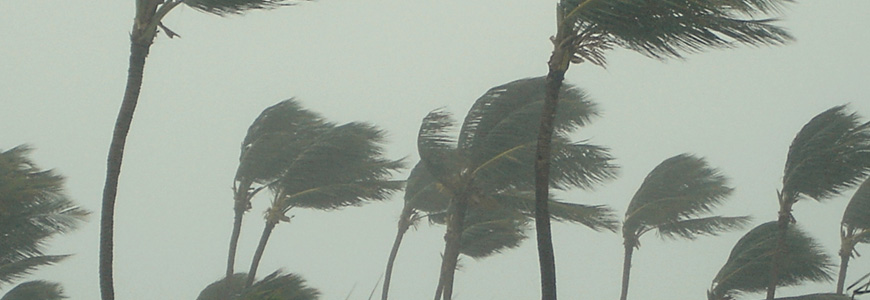Fires, hurricanes, flooding, mudslides, tornados, heat waves, snow storms—2017 served as an almost constant reminder that disasters can strike anywhere.
Medical practices are taking notice. MGMA Healthcare Consulting Group surveyed medical practices and found that almost 80% reported having an emergency preparedness plan.
“Disaster planning is a foundational piece of managing your practice,” says Ken Hertz, principal consultant with MGMA. “It’s not a luxury.” Given the essential nature of health care services, all practices should have a comprehensive written plan that is continually updated and practiced to identify gaps and increase readiness.
Julie Brightwell, RN, JD, director of patient safety at The Doctors Company, a medical malpractice insurance company, points out that medical practices have two roles in disasters: as providers and consumers of emergency services. Comprehensive disaster planning takes both roles into consideration.
This isn’t a task that practices can outsource or delegate, Hertz cautions. “Practice physicians and staff need to be a part of the process.” Luckily, the task does not need to take an overwhelming amount of time, and it can even be a team-building event. The process includes brainstorming, information gathering, compiling, and practicing.
Brainstorming. The first step is to gather the team to talk through potential emergency situations and how they would affect the practice, which might take one or two sessions. Be sure to include at least one person from every department, and designate someone to take notes.
Depending on location, some natural disasters might be more likely than others, but a comprehensive plan should consider all possibilities: power outage, blizzard, hurricane, tornado, and so on.
“Get everyone’s input for what it might mean for their specific role in the practice,” says Brightwell, and consider both how best to prepare as well as how to quickly recover afterward. Technology—such as cellphones and electronic health records (EHRs) with cloud backups—can be lifesavers in the event of a disaster. But cell towers can be damaged, and backups can fail, so it is best to have contingency plans for your contingency plans.
The back-office staff can focus on making sure EHR and practice management files are properly backed up and recoverable. Front-desk staff can focus on communications, such as staying in touch with staff and notifying patients of practice status. Staff should also consider what information, passwords, and instructions are needed to notify co-workers and patients under a variety of circumstances (eg, during power or cell outages or while offsite). For instance, who will be responsible for changing the outgoing voicemail message or posting updates on social media? Under what circumstances will you contact patients before a predicted emergency or postpone elective procedures? Brightwell urges practices to think about patient and staff safety and consider rescheduling elective procedures when travel would be dangerous.
Additionally, clinical staff should consider how different situations may affect patient care. What happens if procedures are underway when the power goes out? What medications or vaccinations must be refrigerated? What if flooding wipes out medical supplies? Brightwell suggests also being ready to make do with paper or temporary records if electricity or computer access is curtailed in a disaster.
Finally, this is also a good time to encourage all staff to develop a personal disaster plan. Having a plan for home and family members makes it easier to focus on patient care in an emergency.
Information gathering. Practices should gather information from other sources, such as medical societies, professional organizations, affiliated hospitals, and building management. Medical societies and organizations like MGMA have checklists that can be useful for disaster planning.
Many communities have an emergency management agency that oversees preparations and response to natural disasters. Staff members can attend emergency response meetings and report back. Brightwell also suggests conferring with home health or medical supply agencies to which the practice refers patients to make sure they have a procedure in place to respond to patient needs in an emergency.
It is also recommended to review policies and regulations that might come into play during an emergency. For example, the Health Insurance Portability and Accountability Act allows practices to release information to treat patients, including coordinating care with other providers, helping to fill prescriptions destroyed or lost in a disaster, or finding other appropriate health services. Although it is best to obtain written or at least verbal permission before releasing information, that may not be possible in an emergency.
Compiling. Your practice’s disaster plan should be documented and kept with all other essential documentation, including contact information for staff members, vendors, insurance companies, local hospitals, and building management. Brightwell also suggests having a copy of your certificate of malpractice insurance, medical license, and Drug Enforcement Administration information, which you may need if you must relocate your practice. Keep your plan handy at the front desk but also in offsite locations and in the cloud.
Practicing. Developing a disaster plan is not a case of “once and done.” It is important to revisit the plan at least once a year to make sure it is up-to-date. Instead of just reading it, act it out or talk it through. Hertz also recommends that practices regularly check backups and try restoring files to ensure that systems are working correctly. Staff can also participate in community-wide disaster drills.
Practicing a disaster plan can not only reveal gaps and potential problems but can also ensure a faster response when an actual emergency arises.
